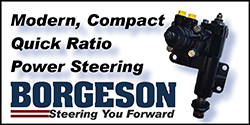Hey guys. I am trying to learn how to tune my 408. 9.5 compression, 235/239 @050, 535/550 lift with a Holley Sniper feeding the fuel and controlling the timing. The engine was dynoed with a best of 12.8 a/f and 35 degrees of timing at wot. I am trying to learn more of how to fine tune the cruise settings. Right now it seems to like 13.5 idle, 13.8 cruise a/f. I started the cruise at 15 and it felt like it was “trailer hitching”. Couldn’t hear it, but I could feel it. I dropped the a/f .2 at a time, the 13.8 feels the best. I looked at the plugs when it was about 14.5, the electrode was a grayish. Right now I think I am good with those settings for now.
I have read a lot about the timing. Holley uses kPa, it cruises between 35-40 kPa (converts to 10.3-11 hg). This is cruising at between 2500-3000 rpm, which is from about 50-60 mph. Right now the cruise timing is at 36, I am trying to introduce more of a vacuum advance in that area. From what I have read I should be able to add a good 10+ degrees of timing into that area. I’m going to attach a screenshot of my timing table, does what I think make sense? I can adjust as I go, but is adding 10 degrees sound like a place to start? And I know, there’s probably some head scratching blue areas it there, I’m trying to figure this out.

I have read a lot about the timing. Holley uses kPa, it cruises between 35-40 kPa (converts to 10.3-11 hg). This is cruising at between 2500-3000 rpm, which is from about 50-60 mph. Right now the cruise timing is at 36, I am trying to introduce more of a vacuum advance in that area. From what I have read I should be able to add a good 10+ degrees of timing into that area. I’m going to attach a screenshot of my timing table, does what I think make sense? I can adjust as I go, but is adding 10 degrees sound like a place to start? And I know, there’s probably some head scratching blue areas it there, I’m trying to figure this out.
















